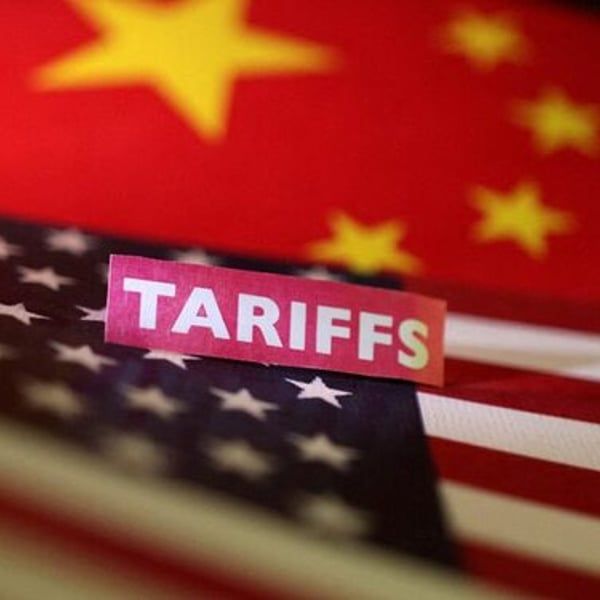By
Reuters
Published
July 27, 2025
The main American and Chinese negotiators meet in Stockholm on Monday to address long -standing economic disputes at the center of a commercial war between the two main economies of the world, with the aim of extending a truce that keeps the strongly higher tariffs at bay.
China faces a deadline of August 12 to reach a durable tariff agreement with the administration of President Donald Trump, after Beijing and Washington reached a preliminary agreement in June to end weeks of growing Tit -for-Tat tariffs.
Without an agreement, global supply chains could face a renewed agitation of duties exceeding 100%.
Stockholm conversations, led by the Secretary of the United States Treasury, Scott Besent and Chinese vice president, He Lifeng, come just after the largest commercial agreement of Trump so far, with the European Union accepting a 15% tariff on their exports of goods to the US. UU. And agreeing to make significant purchases of the EU of the United States.
That agreement reached the president of the European Commission, Ursula von der Leyen, on Sunday in Scotland also requires $ 600 billion in investments in the United States by the EU, Trump told reporters.
A similar advance in conversations between the United States and China is not expected, but commercial analysts said that another 90 -day extension of a tariff control and export control in mid -May was probably probable.
An extension of that length would avoid a greater escalation and help create conditions for a possible meeting between Trump and Chinese President Xi Jinping at the end of October or early November.
The spokesmen of the Office of Representatives of the White House and of the US
The Trump administration is about to impose new sector tariffs that affect China, even in semiconductors, pharmaceutical products, ground boat cranes and other products.
“We are very close to an agreement with China. We really arrive at an agreement with China, but we will see how Trump told journalists before their meeting with Von der Leyen, without providing more details.
The previous commercial conversations of the US-China in Geneva and London in May and June focused on bringing retaliation tariffs of the United States and China of triple digit levels and restoring the flow of rare earth minerals stopped by China and Nvidia H20 AI and other products arrested by the United States.
Until now, conversations have not deepened broader economic problems. They include complaints from USA.
“Stockholm will be the first significant round of commercial conversations between the United States and China,” said Bo Zhengyuan, a partner of Shanghai, of the Chinese consulting firm Plenum.
Trump has succeeded in pressing some other commercial partners, including Japan, Vietnam and the Philippines, in agreements that accept higher tariffs in the USA. UU. From 15% to 20%.
Analysts say that China's US negotiations are much more complex and will require more time. Chinese control in the global mineral market and rare earth magnets, used in everything, from military hardware to car windshield engines, has proven to be an effective leverage point in US industries.
At the bottom of the conversations, a possible meeting between Trump and XI is speculated at the end of October.
Trump has said that he will soon decide if he will visit China on a historical trip to address trade and security tensions. A new outbreak of tariffs and export controls would probably derail any plan for a meeting with XI.
“The Stockholm meeting is an opportunity to start laying the foundations for a Trump visit to China,” said Wendy Cutler, vice president of Asia Society Policy Institute.
Besent has already said that he wants to resolve an extension of the deadline of August 12 to prevent tariffs from retiring to 145% on the American side and 125% on the Chinese side.
Even so, China will probably request a reduction in multi -layer US tariffs by a total of 55% in most goods and the flexibility of US high -tech export controls, analysts said. Beijing has argued that such purchases would help reduce the United States commercial deficit with China, which reached $ 295.5 billion in 2024.
Currently, China faces a 20% tariff related to the United States fentanyl crisis, a 10% and 25% reciprocal rate of duties in most industrial goods imposed during Trump's first mandate.
Besent has also said that he would argue with the need for China to rebalance its exports economy towards the national consumer demand. The change would require China to end a prolonged property crisis and boost social security networks to encourage household spending.
Michael Froman, a former commercial representative of the United States during the administration of Barack Obama, said such change has been an objective of the United States political leaders for two decades.
“Can we effectively use tariffs so that China fundamentally changes its economic strategy? That remains to be seen,” said Froman, now president of the Group of Experts of the Council on Foreign Relations.
© Thomson Reuters 2025 All rights reserved.












